
In The Life Of Frida: Women Artists From History


One of the great pioneers in the history of arts & one of the greatest artists of the 20th century, Frida Kahlo, to be specific Magdalena Carmen Frida Kahlo y Calderon, needs no introduction.
Frida was born on July 6, 1907, in the house of her parents, known as La Casa Azul (The Blue House), in Coyoacan. In a small town on the outskirts of Mexico City.
Frida’s short-lived life has been nothing less than exceptional. From contracting polio at the age of 6, living amidst the violence of the Mexican revolution, the horrific accident shattering her spine to a tumultuous marriage with painter Rivera, and those heart & body wrenching miscarriages with a heart yearning for a child.
She went through it all. Frida lived through all these and other numerous pains of life and body with a brush and paints in her hand.
Navigating her pains, suffering, fear, joys, fancies all through one thing, painting, using it like her diary.
With slim sable brushes, Frida Kahlo painstakingly rendered her bold unibrow and moustache in dozens of self-portraits.
After the accident, Frida Kahlo turned her attention away from the study of medicine to begin a full-time painting career. The paintings fall into several groups: the early pictures as she was finding her style; the numerous self-affirming portraits (‘I paint myself because I am often alone because I know myself best’);

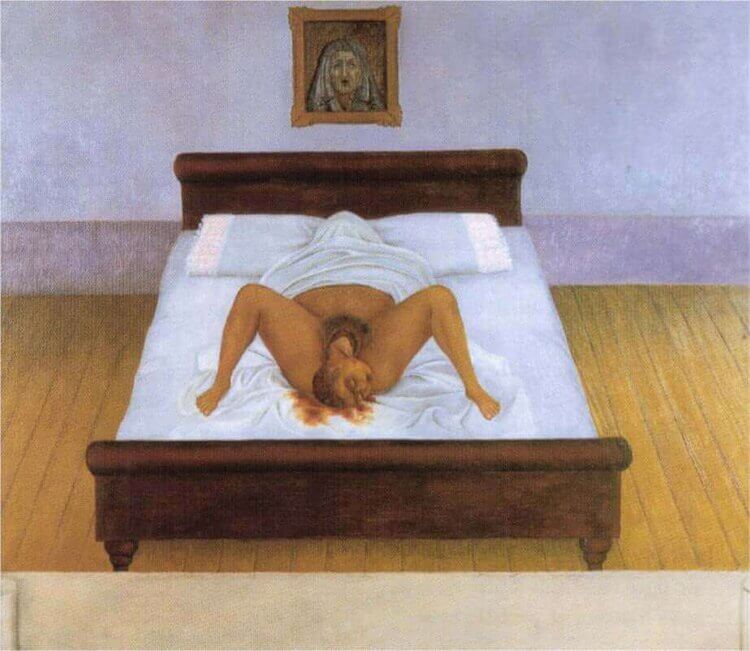
My Birth, 1932 by Frida Kahlo
Courtesy of www.FridaKahlo.org
the explicit portrayals of life events, such as My Birth (loaned by Madonna), a miscarriage, her failed marriage and the suicide of a friend; the still lives of Mexican fruit; ironic commentaries on the US (‘gringolandia’) and her world views, comprising naturalism, communism and the continuity and force of life. Many are oils painted on metal or wood, enabling her distinctive approach to surface and touch.
A common feature being duality: she often juggled between two sides of a subject like the body she lost and the body she had; her heterosexual and lesbian affairs; traditional and modern ways; Mexican and European, the closeness and treachery of those she loved; sadness and joy; the community of her world view and the loneliness of her position.
The Two Fridas, 1939 by Frida Kahlo
Kahlo had much to be miserable about, but her nature was to live life as fully and as passionately as she could.Of her 143 paintings, 55 are self-portraits which often incorporate symbolic portrayals of physical and psychological wounds. She insisted, “I never painted dreams. I painted my own reality”.
The Broken Column, 1944 by Frida Kahlo
Courtesy of www.FridaKahlo.org
Kahlo was deeply influenced by indigenous Mexican culture, which is apparent in her use of bright colors and dramatic symbolism.
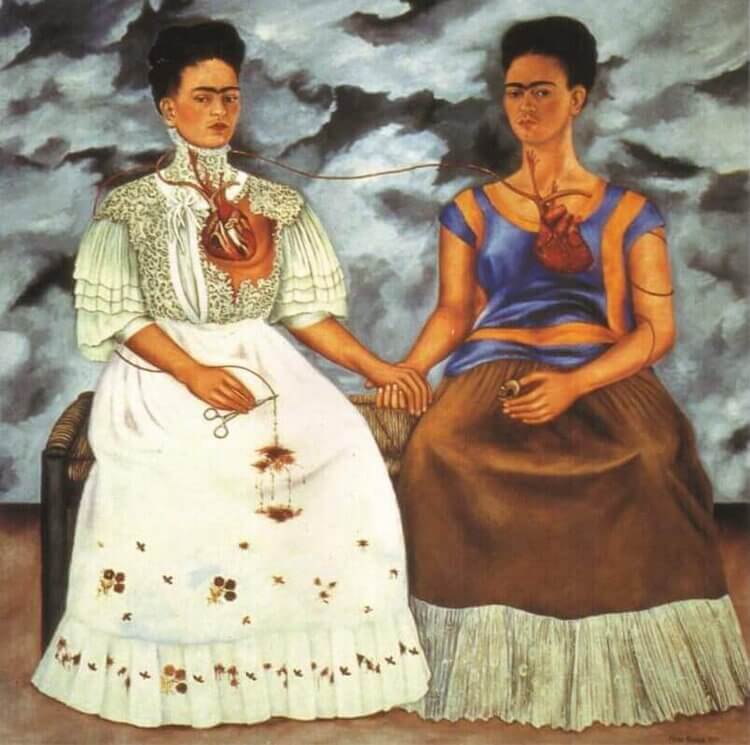

The Louvre bought one of her paintings, The Frame, which was displayed at an exhibit. This was the first work by the 20th-century Mexican artist ever purchased by the internationally renowned museum.
Frieda died on July 13, 1954. A few days before she died, she wrote in her diary: “I hope the exit is joyful – and I hope never to return – Frida”. The official cause of death was given as pulmonary embolism, although some suspected that she died from an overdose that may or may not has been accidental.
A pre-Columbian urn holding her ashes is on display in her former home, La Casa Azul (The Blue House), in Coyoacan. Today it is a museum housing a number of her works of art and numerous relics from her personal life.
Years Later, Frida stands strong as an icon and inspiration for so many of us. Her strength & spirit to fight every come what may, is something we definitely need to learn.
Closing with a line from the artist itself,
“Feet, what do I need you for when I have wings to fly?”
– Frida Kahlo
Citations:







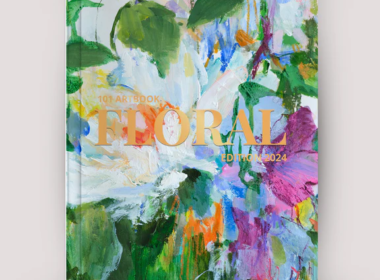



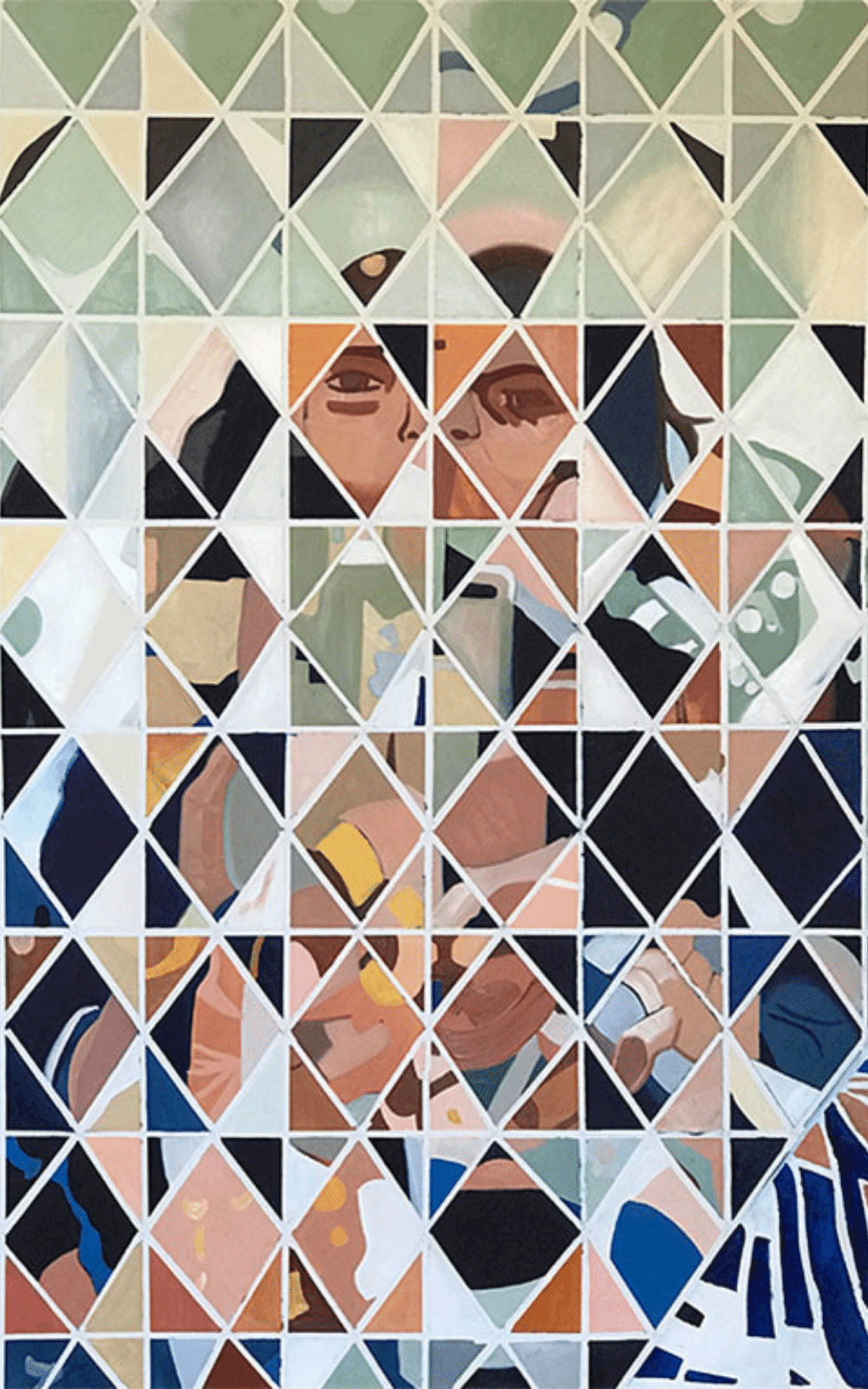

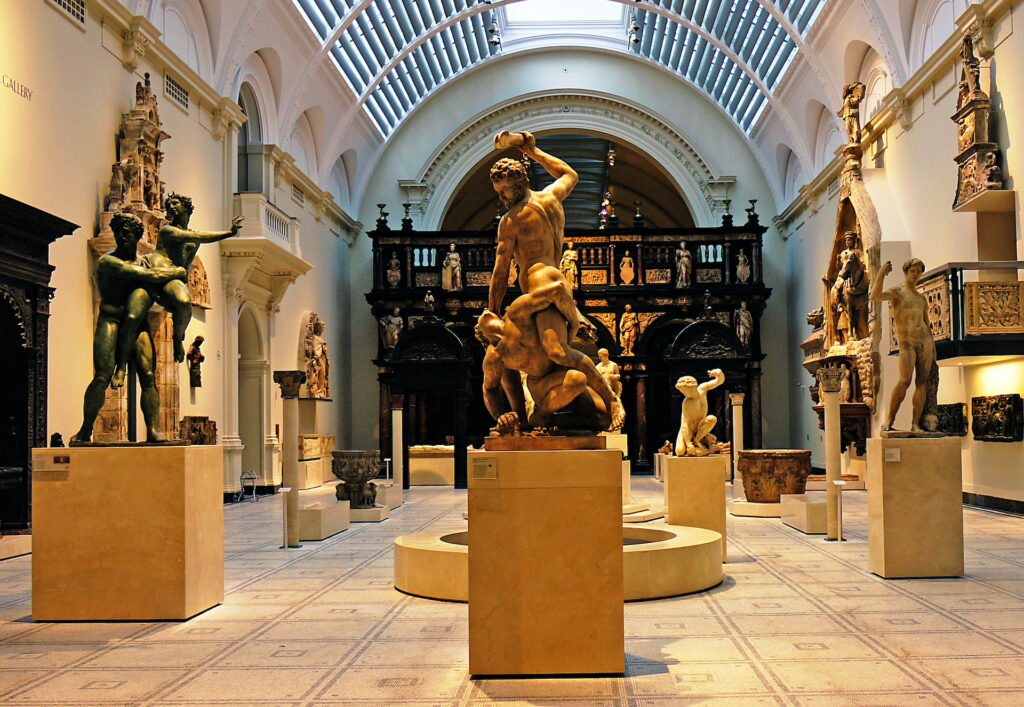

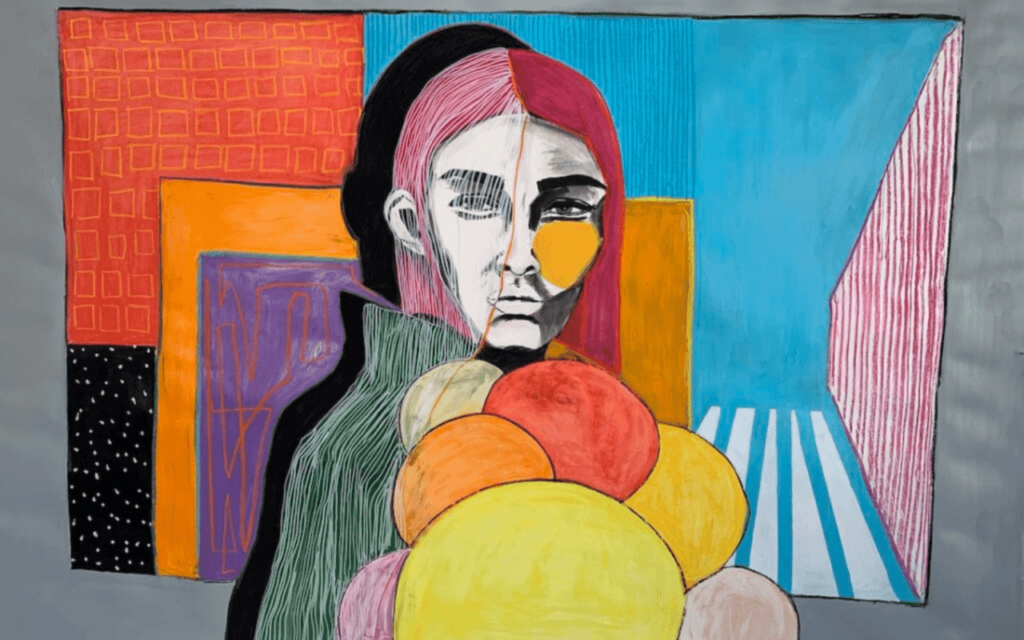

Comments 12